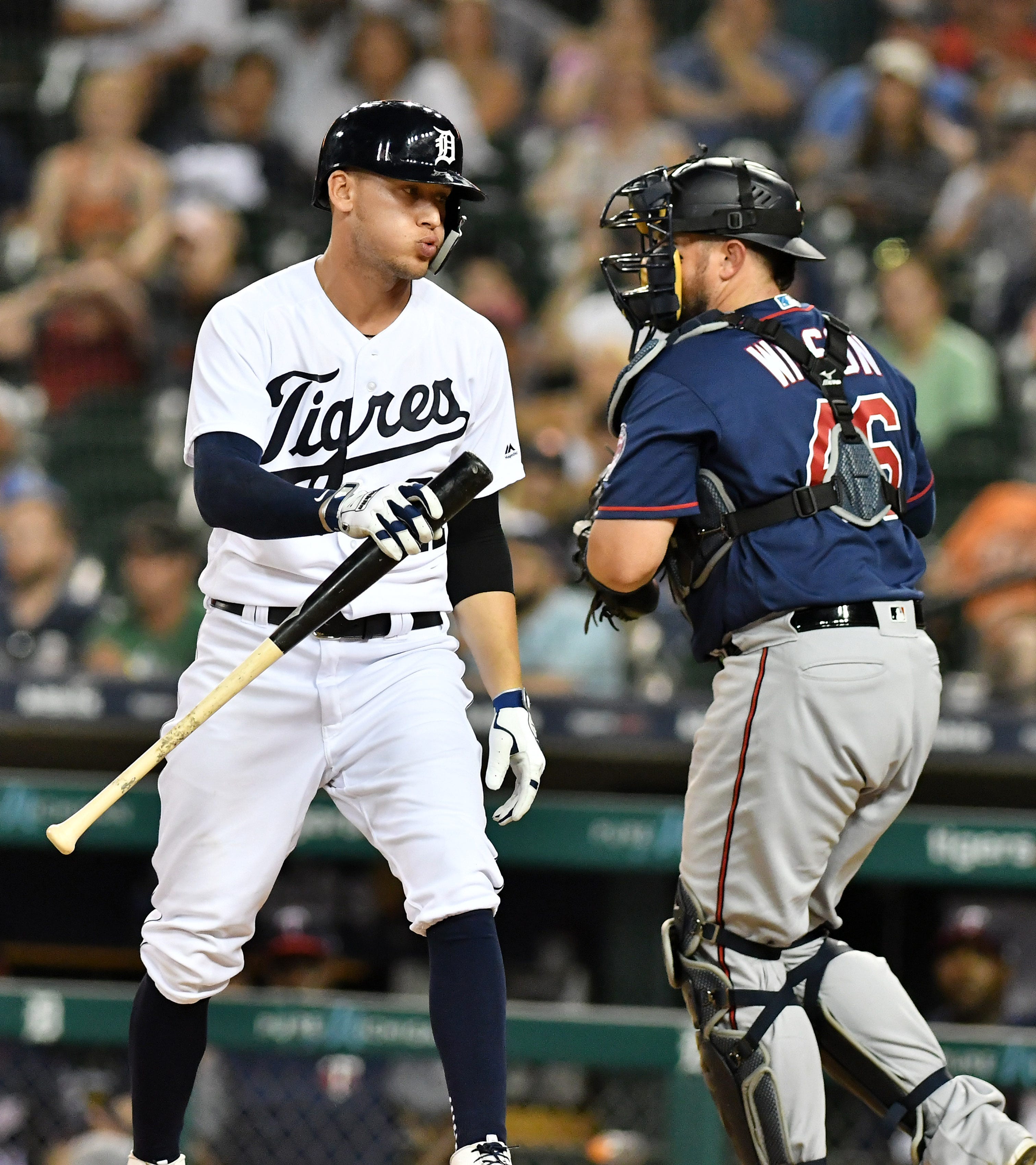McCosky: Tigers' strikeouts are a problem, even put to the 'Dinosaur Test'
 Chris McCosky
Chris McCosky
Detroit — You get to a point in your professional life, if you have been in the same line of work for nearly four decades as I have, where you start questioning your methods, questioning your perspective, questioning your relevance.
Sometimes you need to give yourself the dinosaur test. Yes, for sure, some of my methods are old. I still transcribe my quotes long-hand. I still use a digital recorder and not my iPhone. I still think it’s disrespectful to Tweet during an interview or press conference. I still have an AOL email address.
Dinosaur.
But I also think it matters that your reporting is authentic. Meaning, if you cover a Major League Baseball team, you cover the games live, every day. You talk to the players, the manager, the coaches, scouts, etc. A team’s won-loss record is irrelevant to your daily task of covering the team. The importance of the team’s news is not heightened or lessened by its position in the standings.
The job is to cover the team — good, bad and ugly. Readers can decide what they care about — but you still need to provide them all options.
More: Henning: Sadness of Mario Impemba-Rod Allen fracas haunts all parties
I still think accountability, objectivity, thoroughness and fairness matter more than shock value and web site click-ability. I still think the reporter should keep himself or herself out of the story as much as possible. I think more readers need to be educated on the difference between what a columnist does (give opinions) and what a reporter does (report the news).
(This is a column, written by a reporter. Confusing, I know.)
So, yeah, in some ways I am a dinosaur. But I believe in my heart that my ethics are relevant, still requisite for this job. I don’t think I’m closed to new schools of thought, either journalistically or in baseball.
Which brings me, finally, to the point of all this.
Last week, I wrote an article explaining manager Ron Gardenhire’s concern about the general acceptance of the strikeout, baseball-wide and, more significantly for him, in the Tigers’ organization. From Low-A all the way up through the big-league club, there were nearly 6,000 (5,848) strikeouts in the Tigers’ organization last season.
Gardenhire would like more of an emphasis placed, from the bottom of the system up, on having a better two-strike approach and putting more balls in play. He made it clear, and it was clear in my story, that he wasn’t talking about legitimate home-run hitters. He doesn’t want a healthy Miguel Cabrera to choke up and try to hit the ball to right field with two strikes.
But the Tigers last season were mostly devoid of legitimate home run threats and they had a 22 percent strikeout rate. Gardenhire doesn’t think a hitter like JaCoby Jones should strikeout 30 percent of the time, that Niko Goodrum should strikeout 27 percent of the time, that Jeimer Candelario should strikeout 26 percent of the time.
More: Thursday's ALCS: Price pitches Red Sox past Astros, into World Series
That seemed like a perfectly logical, time-honored, point of view. You put the ball in play, good things can happen. You strikeout, nothing good happens.
But I got some well-intentioned push-back from some readers and some analytics-inclined media folks who don’t think the strikeout, from an offensive perspective, is any big deal. That strikeouts, in the big picture, don’t matter much.
And that is what drove me to the dinosaur test. Maybe I was missing something? Maybe I was being blinded by some old-school myopia.
My conclusion? It’s not a generational thing. It’s a baseball thing. And strikeouts do matter. In the context of the game, of playing winning baseball, strikeouts matter immensely.
This is where the divide sometimes occurs between old-school and new-age baseball talk. The value and significance of analytical interpretation varies depending on the topic — be it assessing talent for the draft or for trades, scouting an upcoming opponent or within an actual game.

It is true, certainly, that new generation statistics like OPS, runs created, weighted on-base percentage, and WAR give a more complete assessment of offensive production than batting average, runs batted in and slugging percentage.
And when a team is looking to draft or trade for a player, or to determine a player’s value within their organization — those statistics are touchstones. And maybe a hitter’s strikeout rate isn't as impacting in those decisions as an old-schooler might think.
I don’t agree with that, though. If hitters struck out less, put more balls in play, they would increase hit probability which, logically, would positively impact those stats. I am sure the probability wizards can refute that on several levels.
More: Orchard Lake St. Mary's to dedicate 'Dan Petry Field' in honor of ex-Tiger
But what is irrefutable, within an actual game and in the pursuit of playing winning baseball on a consistent basis — which is a manager’s primary goal — strikeouts are poison. Tigers hitters last season struck out 42 percent of the at-bats in which they got two strikes. They struck out 50 percent in 0-2 counts and 46 percent in 1-2 counts. We aren’t talking about a lineup of sluggers here, either.
A manager of this team is not out of line preaching the need for a better two-strike approach.
Last season and for the last few seasons, the Tigers have been astonishingly deficient in terms of situational hitting. And strikeouts are a factor. This is data from last season, compiled by Baseball-Reference.com:
►With no outs and a runner on third, Tigers hitters struck out 11 times in 17 plate appearances.
►With runners are first and second and no outs, they struck out 14 times in 88 plate appearances.
►With runners at second and third and no outs, they struck out 10 times in 24 plate appearances.
►With the bases loaded and no outs, they struck out 22 times in 32 plate appearances.
Maybe those are old-school statistics. But if you are failing to drive in a run, failing even to advance runners by not putting the ball in play 35 percent of the time in those situations, you aren’t playing winning baseball.
The strikeout is useless. It’s the antithesis of a productive at-bat, the ultimate failure for a hitter. That’s just truth. There is nothing old-school or new-school about that.
We need to get over this generational bias — this idea that you are out of date if you quote batting average and current if you quote wOBA. Analytics are great in terms of assessing probability and forecasting and projecting talent. I don’t have my head in the sand on this. I use the new-generation data a lot to support my reporting.
More: Ex-Tigers manager Brad Ausmus interviews for Angels' opening
But I will never lose sight of this basic, fundamental truth — baseball is an incredibly hard game played by fallible human beings. And no matter how thoroughly the results are quantified, analyzed and categorized, the game is still fundamentally the same.
A seasoned scout’s eye is as significant as the data spit out by the Ivy-League educated analytics department. There are nuances and happenstances and human influences that occur within the game that are beyond the scope of statistical actuary.
Besides, how dull and soulless would baseball be if viewed only through the prism of algorithms and probability charts?
Strikeouts are timeless, man. They will always matter.
cmccosky@detroitnews.com
Twitter: @cmccosky